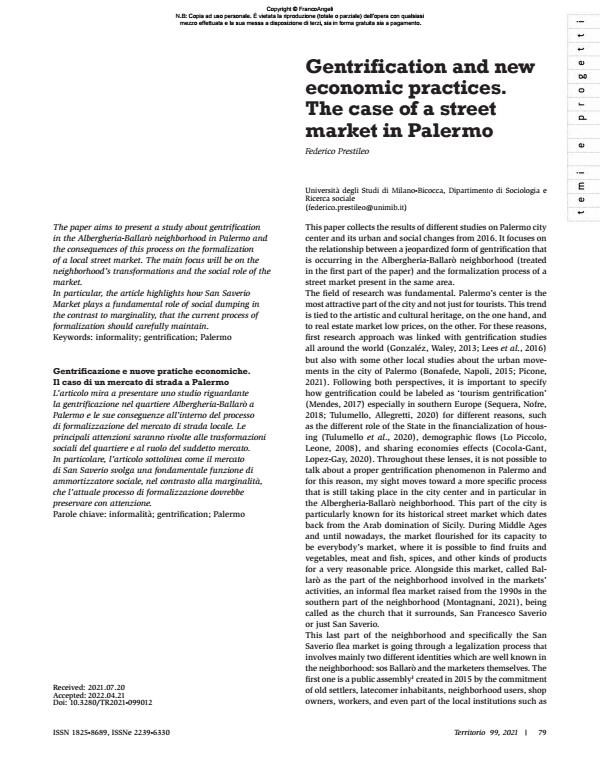Gentrification and new economic practices. The case of a street market in Palermo
Journal title TERRITORIO
Author/s Federico Prestileo
Publishing Year 2022 Issue 2021/99
Language English Pages 9 P. 79-87 File size 375 KB
DOI 10.3280/TR2021-099012
DOI is like a bar code for intellectual property: to have more infomation
click here
Below, you can see the article first page
If you want to buy this article in PDF format, you can do it, following the instructions to buy download credits

FrancoAngeli is member of Publishers International Linking Association, Inc (PILA), a not-for-profit association which run the CrossRef service enabling links to and from online scholarly content.
The paper aims to present a study about gentrification in the Albergheria-Ballarò neighborhood in Palermo and the consequences of this process on the formalization of a local street market. The main focus will be on the neighborhood’s transformations and the social role of the market. In particular, the article highlights how San Saverio Market plays a fundamental role of social dumping in the contrast to marginality, that the current process of formalization should carefully maintain.
Keywords: informality; gentrification; Palermo
Federico Prestileo, Gentrification and new economic practices. The case of a street market in Palermo in "TERRITORIO" 99/2021, pp 79-87, DOI: 10.3280/TR2021-099012